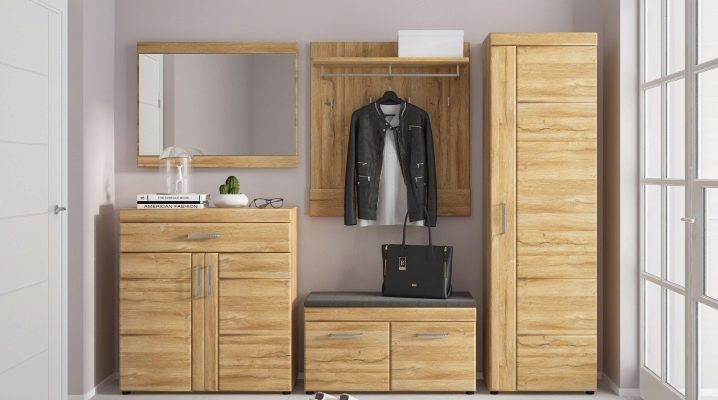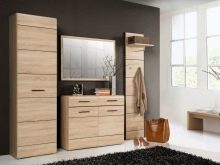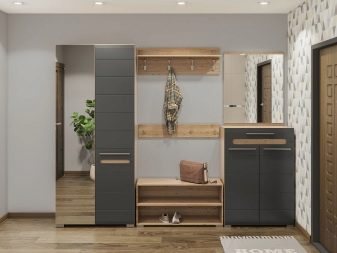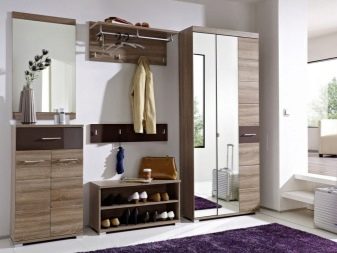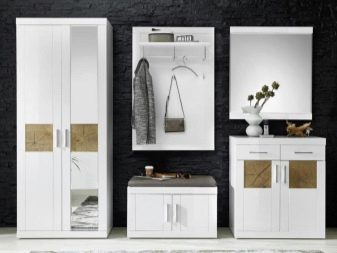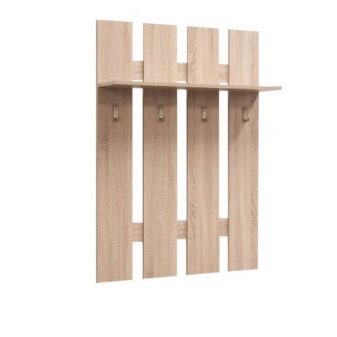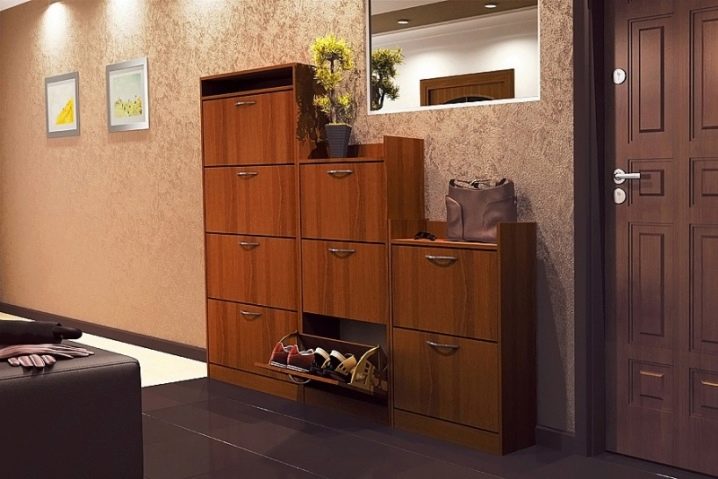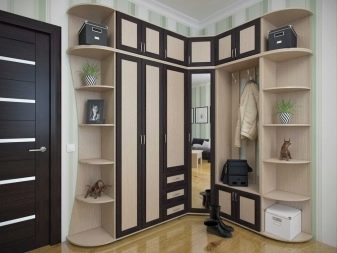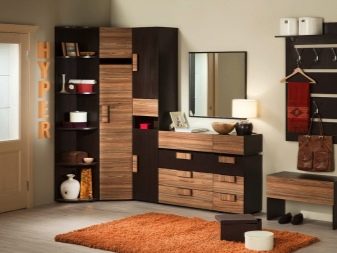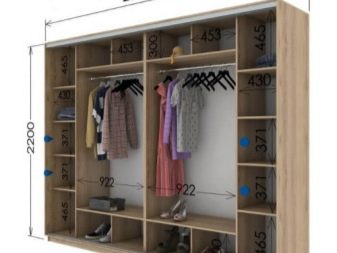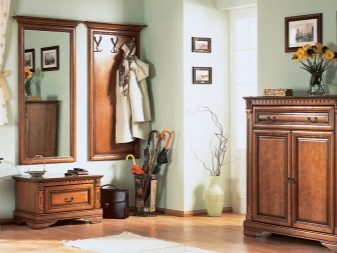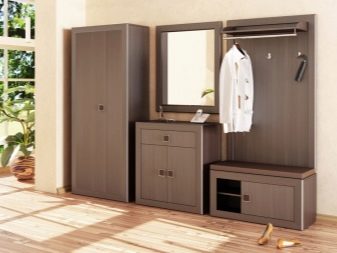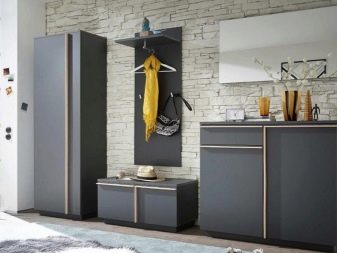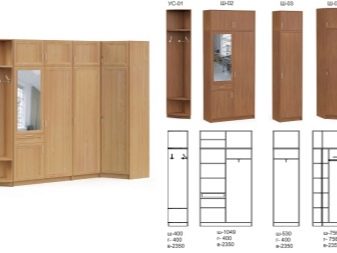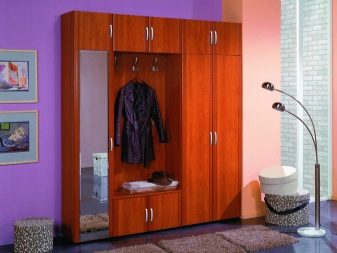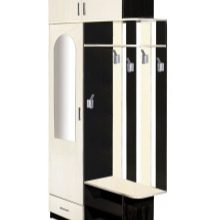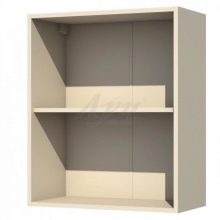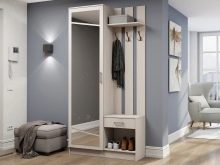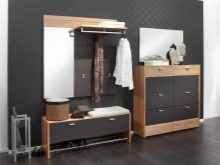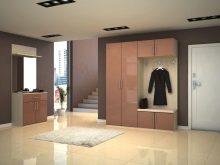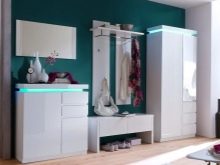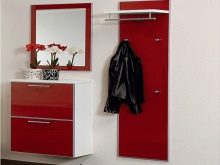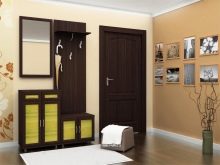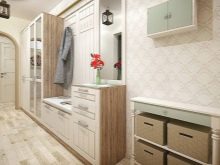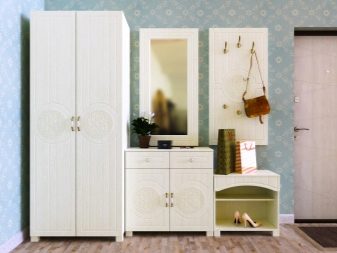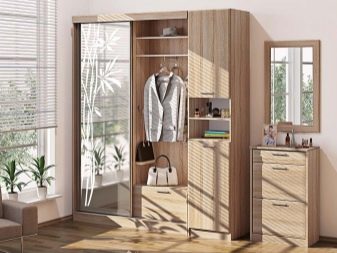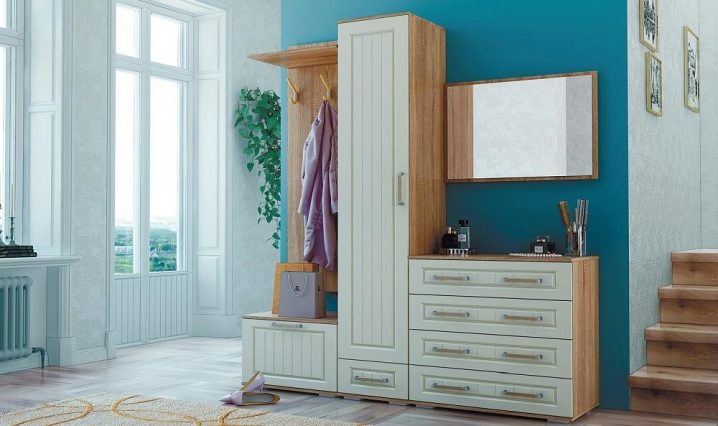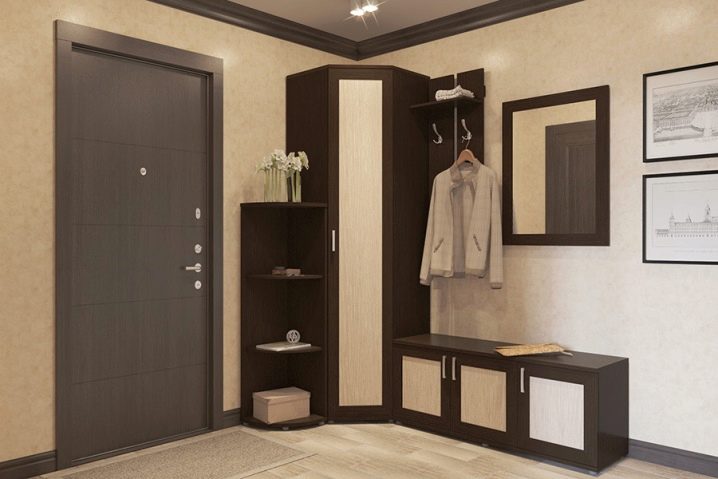All about modular hallways
The article summarizes everything you need to know about modular hallways and their options. Corner furniture in a white corridor and other modern systems for small hallways with a wardrobe and other elements are characterized. Recommendations for selection are given, and several examples of such structures in the interior are shown.
Peculiarities
Coming to a furniture salon, or looking through a catalog, quite often people come across a mention of modular hallways.It is important to understand what it is, how it works, and why it is needed. The name itself suggests that it implies the compilation of a structure from complex blocks. It turns out to be very easy to diversify the filling of the interior with the help of such blocks. In general, this concept was the fruit of a constructivist approach that emerged at the beginning of the twentieth century. But it was only in the 1960s and later that the technical capabilities appeared to implement its principles on a large scale.
Modular furniture is different:
-
a wide range of shapes, textures and colors, changeable at your discretion;
-
relatively affordable price;
-
the ability to adjust the headset to the linear dimensions of the room;
-
the need to use only specialized fasteners - standardized solutions are ineffective and often leave large gaps;
-
complication of the choice of additional decor - its use increases the labor intensity of production and transportation.
What is included in the furniture set?
Hanger
Modular systems in the corridor, even small-sized ones, involve the use of hangers. It often looks like a regular hook panel. This option is not only practical, but also visually laconic. More complex designs are rare.
The reason is the difficulty of their technical and visual coordination with other components; hangers can be wall-mounted or built-in products.
Shoe cabinet
These modules are also quite varied. Often they look more like a shelving unit. In some cases, roll-out units are used. And also there are banquets with shelves or drawers. One way or another, it is the closet for shoes that is an integral part of the composite corridor.
Shelves
Headdresses are usually folded there (already traditionally). But on the shelves you can put many other items that have to be used in everyday life. The size of the designs can vary greatly. Their geometry is also subdivided into several particular types. Usually, solutions with rounded corners are chosen; with skillful selection, the shelf will turn out to be not only a pleasant, but also a useful element.
Sliding wardrobe for clothes
In the description of any advanced room, such an element is always found. Often sliding wardrobes are combined with hangers. But no one forbids, however, the use of separate items. It is by the closet that the merits of the room as a whole are largely judged. In addition to outerwear, you can put there:
-
some shoes;
-
bags;
-
accessories;
-
packages;
-
sports equipment and other useful bulky items.
Dresser
This piece of furniture is often used to store accessories and shoes. It is sometimes used to replace a full-fledged cabinet, and as a way to unload it. A feature of dressers is the variety of designs (textures and colors in the first place). The dimensions of this product are very important - they determine how the chest of drawers can be used. If you plan to store only small items and accessories, you can use models with fewer compartments. Chests of drawers, like wardrobes, can be angular or complemented by a mirror.
Mezzanine
This component of a modular hallway is often used to accommodate those items that are needed only occasionally. Usually the mezzanine resembles a cabinet or shelf. Sometimes this name means the top shelf of the cabinet. The mezzanine is positioned as they consider convenient for themselves. If there are relatively few things in the house, it is quite possible to do without it.
Sometimes mezzanines can be illuminated. The lower part of the element is usually light in color. The classic version involves the use of a luscious dark wood.
It is worth considering that mezzanines are divided into open and closed types. Their angular variety is often used to mask various communications and other inconvenient surfaces.
Materials (edit)
The overwhelming majority of customers are forced to use the cheapest chipboard structures. The outer coating of such products is very different, which allows for flexible design variations. However, the danger of the proliferation of formaldehyde must be taken into account. Therefore, whenever possible, it is worth buying more advanced MDF furniture. It is more expensive than chipboard, but cheaper than natural wood.
If you do not need to save, it is more correct to choose an oak or other solid array.
Design options
The white hallway is an excellent filling of the most diverse interior. With proper care, you should not be afraid of problems with pollution. However, in the autumn-winter and partly spring months, white is still impractical. The way out of the situation is to use other light colors that are acceptable in a modern style. Very dark rooms go to the other extreme - creating a gloomy mood.
Stylish hallways, decorated with a gloss look, always look catchy and expressive, they immediately attract attention. But it is necessary to give an answer in advance to the question whether such a decision is suitable for specific people in a specific interior or not. The problem is that any deformation is clearly visible on the glossy surface. A kind of compromise is a dim gray hallway that allows you to achieve any visual mood. It must be remembered that too dark varieties of gray look gloomy.
And also hallways can be beautiful:
-
in shades of wenge;
-
in the spirit of modernity;
-
built according to the canons of Provence or shabby chic.
Secrets of choice
It is hardly worth focusing on the price - it does not allow us to speak for sure about high or low quality. Much more important is the reputation of the manufacturer and specific options. And also it is worth paying attention to the size: in a small room you need to put completely different products and headsets than in a large corridor. Additionally, you need to consider:
-
characteristics of materials;
-
lighting level and parameters;
-
design;
-
serviceability of the outer surface (any chips and scratches are unacceptable);
-
number of blocks;
-
functionality of the structure.
Examples in the interior
A fairly light modular kit can look good against a blue expressive wall. The rectangular mirror in a wooden frame is very well received. There is a pencil case, a hanger, and horizontal drawers, which allows you to increase the functionality of the product. The top panel of the hanger acts as a mezzanine. The arrangement of the parts in relation to each other is also well thought out.
The corner modular hallway also looks pretty good. The light gray timber façade creates a pleasant impression. It blends harmoniously with the rich red wall. There are pencil cases and shoe racks. The middle corner is slightly smoothed, which is perceived as quite attractive.
And this example shows that even a very dark wardrobe can look great. In general, the furniture here has rich dark cases. But skillfully used light inclusions can significantly improve and soften the appearance. Partially open shelves are an important feature of the composition. The hanger is relatively small, but this is the only and not too significant drawback.
